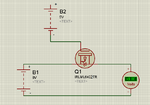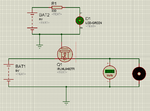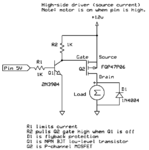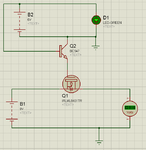gauravkothari23
Advanced Member level 2
Hi all,
I have a small issue. how can i drive a IRLML6402 Mosfet with Source voltage of 9V and gate 5V.
i have tried a circuit in which i am using IRLML6402 Mosfet.
Source Voltage = 9v.
Gate Voltage = 5V.
But i am not getting any output at Drain Pin of mosfet.
I have a small issue. how can i drive a IRLML6402 Mosfet with Source voltage of 9V and gate 5V.
i have tried a circuit in which i am using IRLML6402 Mosfet.
Source Voltage = 9v.
Gate Voltage = 5V.
But i am not getting any output at Drain Pin of mosfet.



